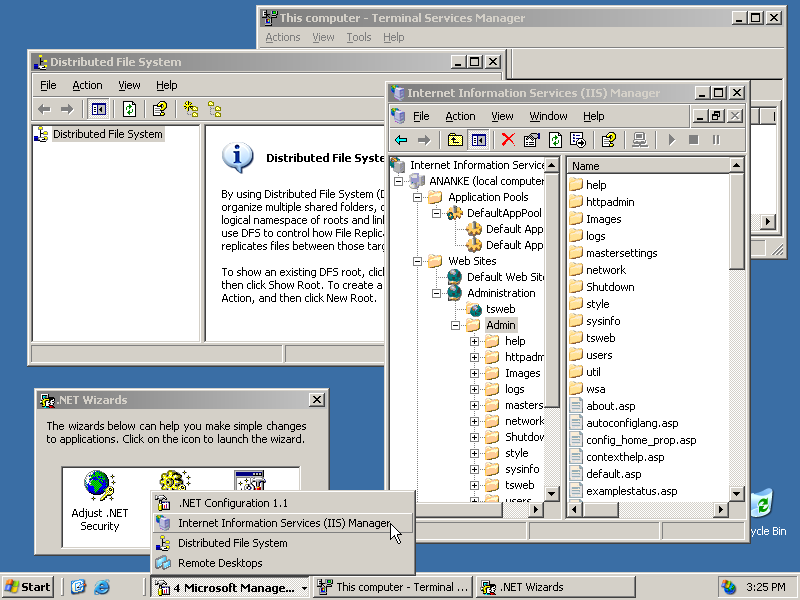An interesting fact to know is that Windows Vista was based and built on the Windows Server 2003 source code.
Features
While retaining some similarities to previous versions, Windows XP's interface was overhauled with a new visual appearance, with an increased use of alpha compositing effects,drop shadows, and "visual styles", which completely change the appearance of the operating system. The amount of effects enabled are determined by the operating system by the computer's processing power, and can be enabled or disabled on a case-by-case basis. XP also added ClearType, a newsubpixel rendering system designed to improve the appearance of fonts on LCD displays. A new set of system icons were also introduced. The default wallpaper, Bliss, is a photo of a landscape in the Napa Valleyoutside Napa, California, with rolling green hills and a blue sky with stratocumulus and cirrus clouds.
The Start menu received its first major overhaul on XP, switching to a two-column layout with the ability to list pin and display frequently used applications, recently opened documents, and the traditional cascading "All Programs" menu. The taskbar can now group windows opened by a single application into one taskbar button, with a popup menu listing the individual windows. The notification area also hides "inactive" icons by default. The taskbar can also be "locked" to prevent accidental moving or other changes. A "common tasks" list was added Windows Explorer's sidebar was updated to use a new task-based designs with lists of common actions; the tasks displayed are contextually relevant to the type of content in a folder (i.e. a folder with music displays offers to play all the files in the folder, or burn them to a CD).
Fast user switching allows additional users to log into a Windows XP machine without existing users having to close their programs and logging out. Although only one user at the time can use the console (i.e. monitor, keyboard and mouse), previous users can resume their session once they regained control of the console.
Downloads
Windows Server 2003 Standard (English 64-bit Disc 1) (.iso)
Windows Server 2003 Standard (English 64-bit Disc 2) (.iso)
Windows Server 2003 Standard (Czech 64-bit Disc 1) (.iso)
Windows Server 2003 Standard (Czech 64-bit Disc 2) (.iso)
After that you can just put the files on a Floppy disk or a CD-ROM and install Windows Server 2003 on a computer, or you can use Virtualbox to emulate it.
Windows Server 2003 and all of its versions requires a serial key to operate fully. You may use the software for 30 days, after which a product key is required.
NOTICE: We cannot legally provide Windows Server 2003 serial keys on this website. Windows Server 2003 is not only still supported, but is a variant of Windows XP. Variants of Windows XP are still supported by Microsoft as of 2015. Please purchase a serial key from Microsoft or a retailer.
Info
Developed by: Microsoft Corporation
Release date: April 24, 2003
Latest version: 5.2 (Released in March 13, 2007)
Source model: Shared source
License: Proprietary commercial software
Preceded by: Windows 2000 (in 1999)
Succeeded by: Windows Server 2008 R1 (in 2008)
Support status: Supported
Support ends on July 15, 2015
System requirements:
x86-based computers:
128 MB of RAM
133 MHz processor
Hard drive of at least 10 GB with 5 GB of space available
Itanium-based computer:
1 GB of RAM
733 MHz processor
Hard drive of at least 20 GB with 10 GB of space available
x64-based computer:
1 GB of RAM
1.4 GHz processor
Hard drive with at least 40 GB with 10 GB of space available
Recommended Downloadable programs
Windows Server 2003 can download programs. You can click on the links below and simply put the files on your floppy disk or CD-Rom.
- Mozilla Firefox
- Google Chrome
- Internet Explorer 8
- Notepad ++
- Miro 6
- BitTorrent
- Malwarebytes Anti Malware
Screenshots


No comments:
Post a Comment